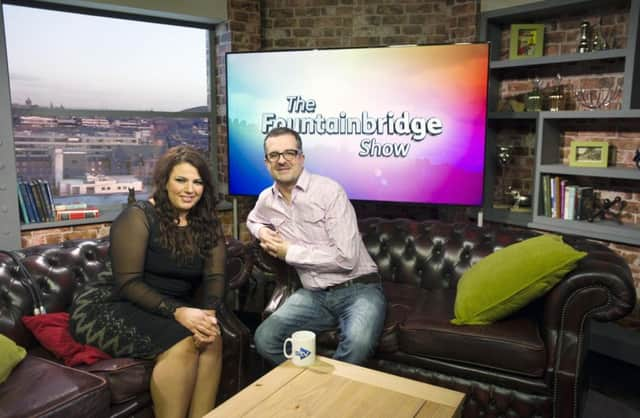Why STV2 failed and what it means for broadcasting in Scotland


It was a remark that caused many staff at STV to roll their eyes in subsequent decades. Thomson, a former owner of The Scotsman, was behind a string of local radio and TV stations in his native Canada. His comment illustrated his belief that advertisers would back the company that had won the Scottish franchise of ITV - and in the long term he was proved right.
But STV has endured ups and downs throughout its 61-year history. The restructure announced today is just the latest stop in an on-going journey to position itself as a serious competitor to BBC Scotland. While of no comfort to the more than 50 staff whose jobs are at risk, it was no secret at the station’s Glasgow HQ that bosses viewed the loss-making STV2 as a luxury they could no longer afford.
An upbeat launch
Advertisement
Hide AdIt was June 2014 when the new STV Glasgow channel was broadcast for the first time, with STV Edinburgh following in January 2015.
They were a legacy of former culture secretary Jeremy Hunt, who believed a genuinely local TV network - similar to the set-up in the US - would engage viewers across the UK.
Some industry experts were surprised when STV opted to bid for the two initial licences available in Scotland, and questioned whether they could ever make money.
Both city channels offered a mixture of original programming and repeats. The Glasgow-based Riverside Show and Edinburgh-produced Fountainbridge Show were the centrepieces. The familiar magazine format offered a breezy mix of studio guests and live performances. While not everyone on screen was a household name, there was a confidence on display and pleasing desire to avoid the tartan-clad Scottish broadcasting clichés of old.
STV2 rebrand
In April 2017 the two existing city channels were combined with three new licences for Aberdeen, Ayr and Dundee under one distinct brand, STV2.
Station bosses described it as “the first commercial TV channel with a distinct schedule for Scotland”.
Advertisement
Hide AdIt was delivered in partnership with further education colleges and universities from across the country. While allowing students valuable experience of working in the industry, some broadcasting observers believed it was proof of a limited budget.
Decline
The reason many new entures eventually fail is a lack of cash. But commercial television, as well as print and online media, has been squeezed hard in recent years by a decline in traditional advertising revenues.
Advertisement
Hide AdSTV2 did not lack talent in front of or behind the camera. The city channels provided first broadcasting jobs for numerous younger journalists who have since joined the main STV network or went on to other positions in the media, including the BBC. Those working for the channel were motivated and keen for it to succeed.
But STV2 was losing money and proved a gamble that ultimately did not pay off for the broadcaster.
The confirmation that BBC Scotland was planning its own dedicated Scottish channel, complete with primetime news show, was likely the final nail in STV2’s coffin.
